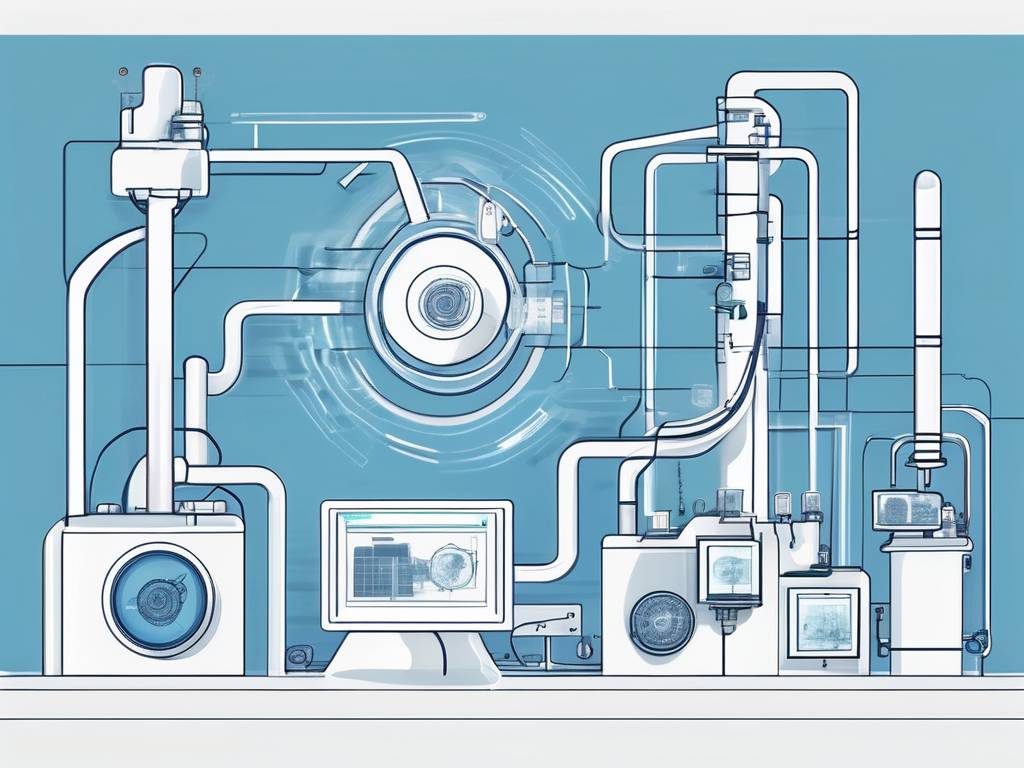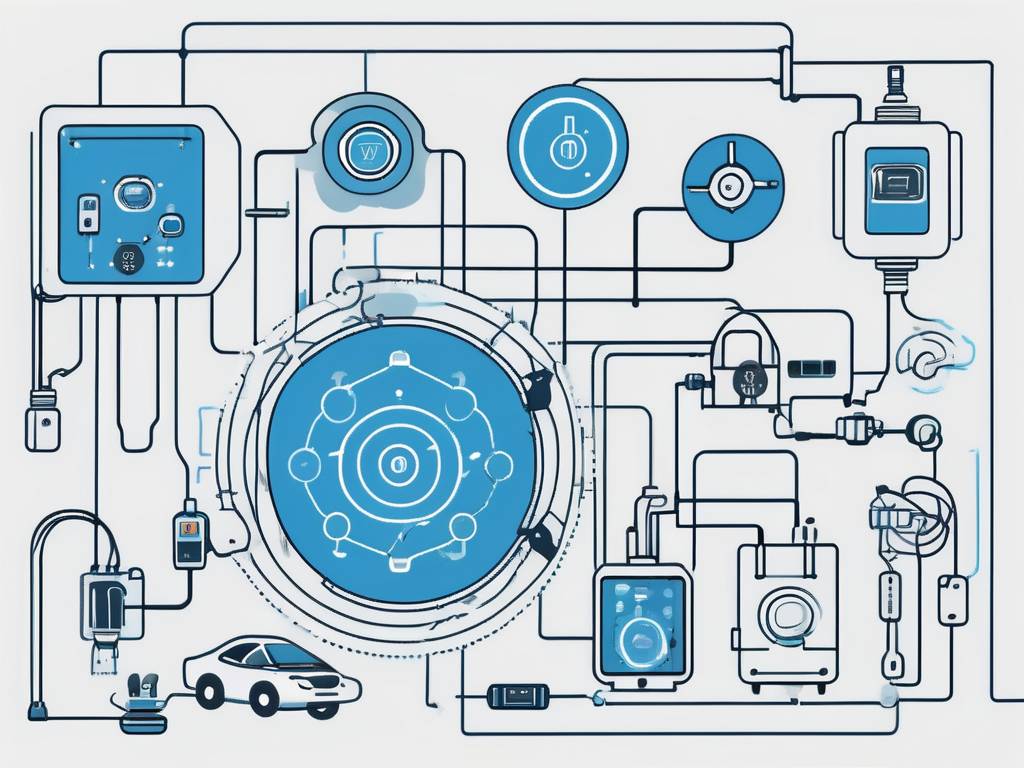IoT Health Monitoring: Internet Of Things Explained
The Internet of Things (IoT) is a system of interrelated computing devices, mechanical and digital machines, objects, animals or people that are provided with unique identifiers (UIDs) and the ability to transfer data over a network without requiring human-to-human or human-to-computer interaction. This article will delve into the intricate aspects of IoT, with a special focus on health monitoring.
IoT has revolutionized various sectors, including healthcare. Health monitoring through IoT has brought about a significant transformation in patient care and disease control. This article will discuss the concept of IoT, its application in health monitoring, and the benefits and challenges associated with it.
Understanding the Internet of Things (IoT)
The Internet of Things (IoT) is a concept that refers to the connection of devices to the internet, allowing them to communicate with each other and with us. These devices can range from everyday household items like refrigerators and thermostats to industrial tools and healthcare equipment. The ‘things’ in IoT generally refer to devices that have been embedded with sensors, software, and other technologies to connect and exchange data with other devices and systems over the internet.
IoT is a key component of home automation and smart homes, industrial IoT, smart cities, and healthcare. It is based on the idea that devices can be made smarter and more useful by connecting them to the internet. This connection allows devices to communicate, analyze, and share data, which can be used to improve efficiency, enable new services, or create better experiences.
Components of IoT
The basic components of IoT include sensors, connectivity, data processing, and a user interface. Sensors are used to collect data from the environment or the device itself. This data is then sent over the internet (connectivity) to a system that can process it and make sense of it (data processing). The processed data can then be accessed and interacted with through a user interface.
The sensors in IoT devices are the ‘eyes and ears’ of the internet. They collect data from the environment, such as temperature, light, motion, or other physical parameters. This data is then sent to the cloud or a local gateway device where it is processed and analyzed. The results of this analysis can then be used to make decisions or trigger actions.
Working of IoT
The working of IoT involves the collection of data from various sources, its transmission over a network, and its processing to derive meaningful insights. The first step in this process is data collection. IoT devices are equipped with sensors that collect data from their surroundings. This data could be anything from temperature readings to heart rate measurements.
Once the data is collected, it is sent over a network to a data processing system. This system could be a cloud-based service or a local server. The data is processed and analyzed to derive useful insights. For example, an IoT device in a car could collect data about the car’s speed, fuel consumption, and engine performance. This data could then be analyzed to determine the car’s efficiency and identify any potential issues.
IoT in Health Monitoring
The application of IoT in health monitoring is a significant advancement in the healthcare sector. IoT devices in healthcare can collect, analyze, and transmit health data or provide remote patient monitoring to medical professionals. These devices can range from wearable fitness devices that measure heart rate and activity levels to advanced devices that monitor specialized implants, such as pacemakers or advanced hearing aids.
IoT in health monitoring can provide real-time health monitoring, which can be crucial in life-threatening situations. It can also facilitate remote patient monitoring, reducing the need for hospital visits and enabling healthcare professionals to monitor patients’ health remotely.
Types of IoT Devices in Health Monitoring
There are various types of IoT devices used in health monitoring. These include wearable devices, implantable devices, and stationary devices. Wearable devices are the most common type of IoT devices in health monitoring. They include fitness trackers, smartwatches, and heart rate monitors. These devices can track various health parameters, such as heart rate, blood pressure, and physical activity.
Implantable devices are another type of IoT devices used in health monitoring. These devices are implanted into the patient’s body and can monitor various health parameters from within the body. Examples of implantable devices include pacemakers and insulin pumps. Stationary devices, on the other hand, are devices that are not worn or implanted but are used to monitor health parameters. These include smart scales, sleep monitors, and blood glucose monitors.
Benefits of IoT in Health Monitoring
IoT in health monitoring offers numerous benefits. One of the primary benefits is real-time health monitoring. IoT devices can collect and transmit health data in real-time, allowing healthcare professionals to monitor patients’ health continuously. This can be particularly beneficial in critical care situations where continuous monitoring is crucial.
Another significant benefit of IoT in health monitoring is remote patient monitoring. With IoT devices, patients can be monitored remotely, reducing the need for hospital visits. This not only reduces the burden on healthcare facilities but also makes healthcare more accessible to people living in remote areas. Furthermore, IoT in health monitoring can also lead to personalized healthcare, as the data collected can be used to tailor treatment plans to individual patients.
Challenges in IoT Health Monitoring
There are also several challenges associated with IoT in health monitoring. One of the primary challenges is data security. Given the sensitive nature of health data, it is crucial to ensure that this data is securely stored and transmitted. However, ensuring data security in IoT devices can be challenging due to the large number of devices and the complexity of the IoT ecosystem.
Another challenge is data privacy. With IoT devices collecting a vast amount of personal health data, there are concerns about how this data is used and who has access to it. Ensuring data privacy is a significant challenge in IoT health monitoring. Other challenges include interoperability between different IoT devices, the cost of IoT devices, and the need for robust and reliable connectivity.
Addressing the Challenges
Addressing the challenges in IoT health monitoring requires a multi-faceted approach. One of the key steps is to implement robust security measures to protect data. This can include encryption, secure data transmission protocols, and secure storage solutions. Additionally, strict access controls should be implemented to ensure that only authorized individuals have access to the data.
Interoperability between different IoT devices can be addressed through standardization. By developing and implementing standard protocols and interfaces, it can be ensured that different IoT devices can communicate and work together effectively. The cost of IoT devices can be addressed through technological advancements that reduce the cost of sensors and other components. Finally, reliable connectivity can be ensured through the use of robust and reliable communication networks.
Future of IoT in Health Monitoring
The future of IoT in health monitoring looks promising. With advancements in technology, we can expect to see more sophisticated IoT devices that can monitor a wider range of health parameters. Additionally, with the advent of technologies like 5G, the connectivity and data transmission capabilities of IoT devices are likely to improve significantly.
As the challenges associated with IoT in health monitoring are addressed, we can expect to see wider adoption of these technologies. This could lead to a significant transformation in healthcare, with more personalized care, improved patient outcomes, and more efficient use of healthcare resources.
Conclusion
IoT has revolutionized health monitoring, bringing about significant improvements in patient care and disease control. Despite the challenges, the future of IoT in health monitoring looks promising, with the potential for significant advancements in healthcare.
As we continue to explore and understand the potential of IoT in health monitoring, it is crucial to address the challenges and ensure that these technologies are used in a way that benefits patients and healthcare providers while ensuring data security and privacy.

 hello@westlink.com
hello@westlink.com  (866) 954-6533
(866) 954-6533  700 N Colorado Blvd,
700 N Colorado Blvd,






Comments